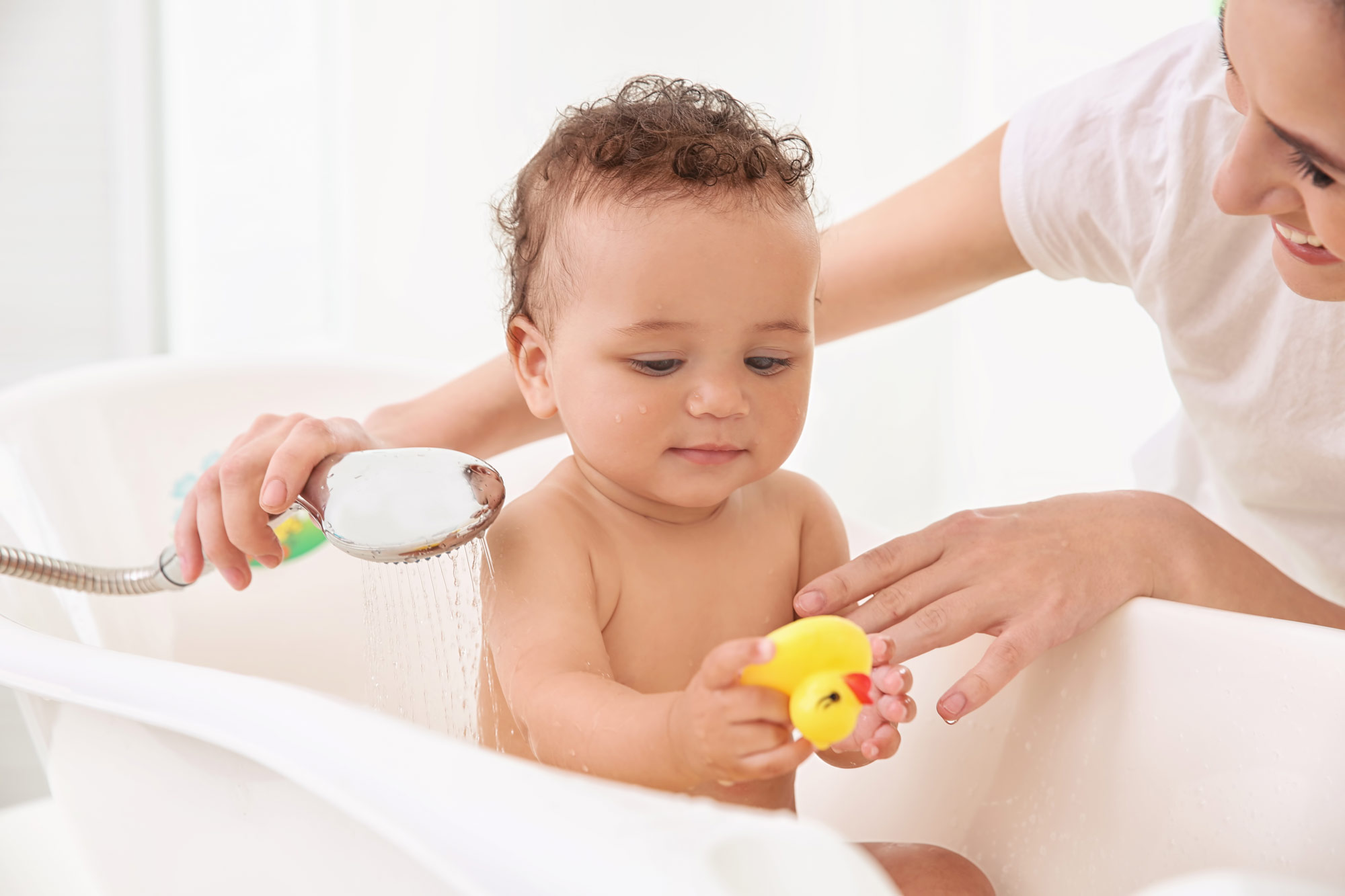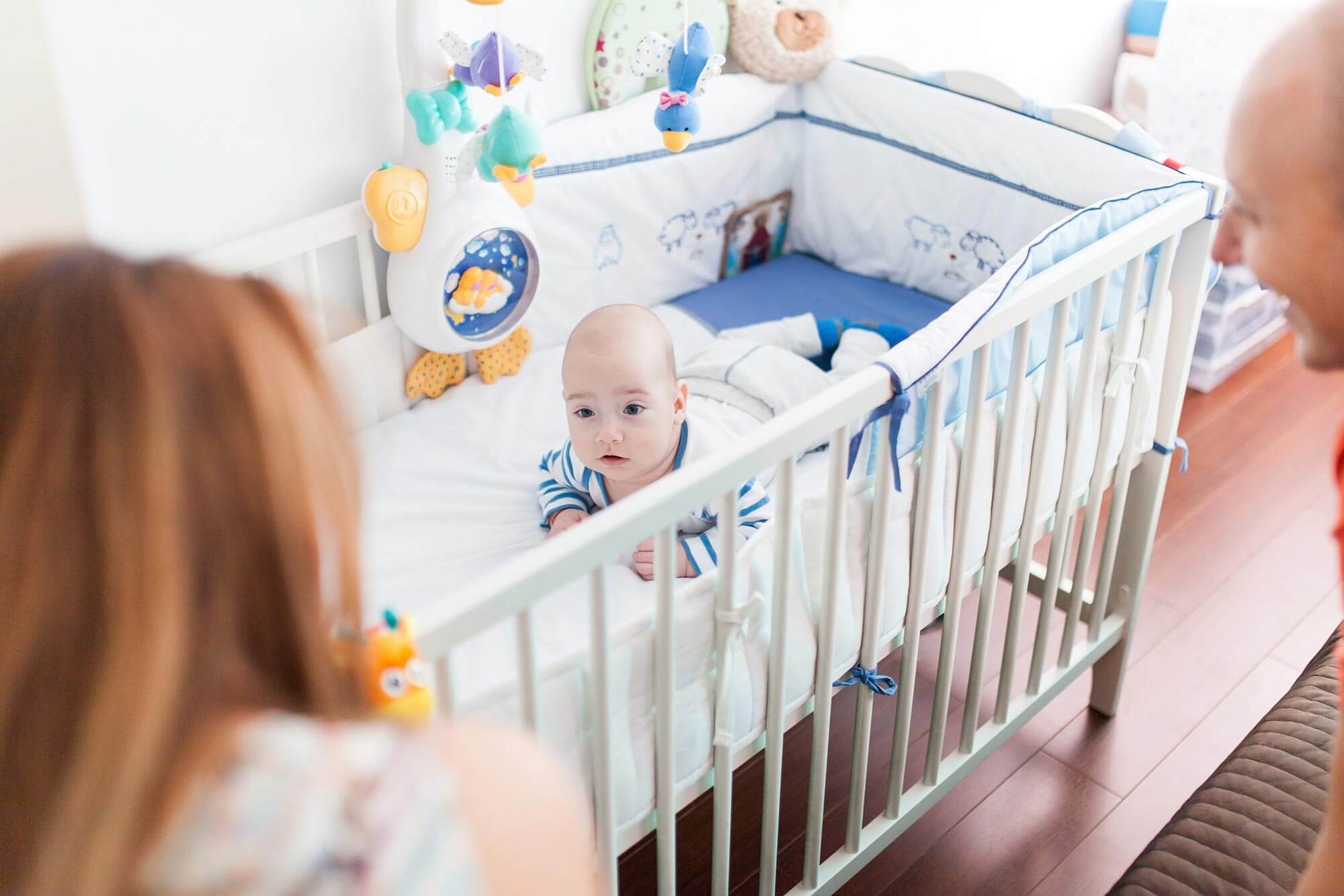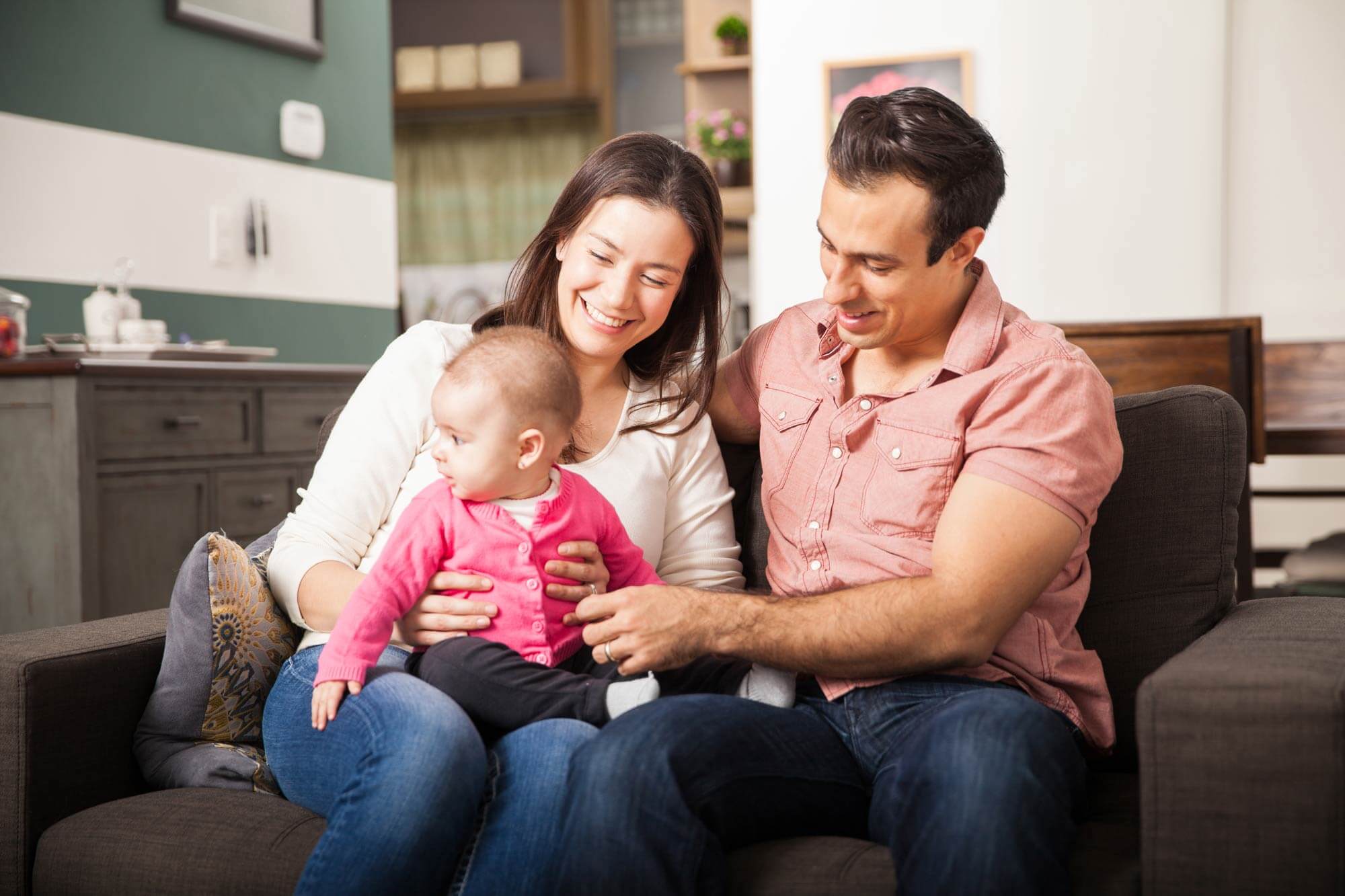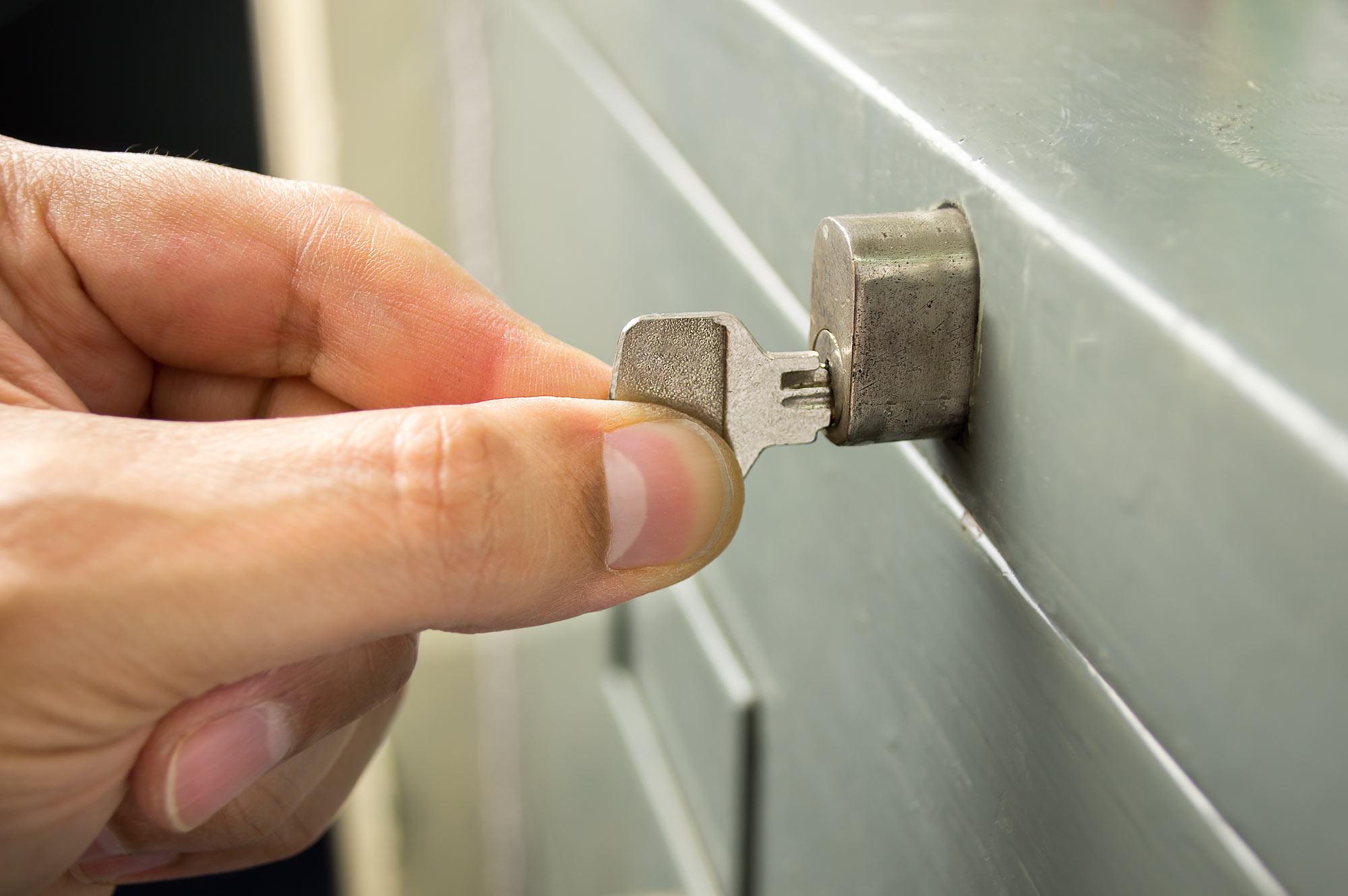Extensive Guide to Babyproofing Your Home
Whether you’re preparing to expand your family, or are expecting a little visitor, you’ll want your home to be equipped with the correct safety measures before their arrival.
You never want to underestimate the importance of baby proofing your home, as little fingers have the potential to get into some unexpected areas. Follow our guide to learn more on how to baby proof your home room-by-room, so you never have to worry about an accident happening.
Table of contents
Baby Proofing Your Bathroom

One of the biggest safety concerns with babies in the bathroom is keeping an eye on them if they are ever near water to prevent drowning — whether that’s the toilet, bathtub or sink. Find out how to ensure a safe bathroom with the tips below.
- Lock your toilet: Babies are curious. Secure the lid of your toilet with a toilet lid lock. Since toilets come in various shapes and sizes, confirm that the product you choose will correctly fit the frame of your toilet.
- Use non-slip bath mats: Use a textured non-slip bath mat that suctions to the bottom of your bath to prevent you or your baby from slipping while bathing.
- Install anti-scald device in bathtub: Baby skin is very sensitive to heat, so to avoid too high of temperatures, you can install an anti-scald device in your bathtub before the scalding occurs. Many of these devices will automatically shut off the water if it becomes too hot, so it’s one less thing you need to worry about.
- Be aware of hot hair tools: If you use a curling iron, hair dryer, hair straightening brush, or flat iron, turn them off after using them, keep the cords on the counter while cooling and stow them away before your baby enters the bathroom.
- Lock medicine cabinets: If your medicine is kept in the bathroom, make sure that all medications are out of reach and are locked in a cabinet to avoid from your baby gaining access to harmful medicines.
- Be aware of water level: When bathing, make sure that the water level in the bathtub doesn’t exceed 2-3 inches to avoid any accidents. Additionally, make sure that you never leave your baby alone in the bathtub regardless of the water level.
Baby Proofing Your Bedroom and Nursery

Your bedroom is where you spend the most time, and whether or not your baby is sleeping in yours or their own nursery, you’ll want to ensure that your baby is protected while spending time in it.
- Assemble a safe crib: You might be surprised by how paramount it is to assemble cribs properly. Follow the instructions properly and confirm that there are no gaps larger than two fingers thick on the sides of the crib. Although it may be tempting, make sure not to place pillows or thick blankets in the crib with the baby to prevent suffocation.
- Window proximity: Don’t set up your crib near a window or in proximity of curtain cords so there is no potential for them to get tangled in the cords.
- Placement of furniture: Make sure that your furniture is positioned away from any area where the baby will be, as well as strapped to the wall so there is no chance that they will tip.
- Install a safety strap: Although you should never leave a baby unattended on a changing table, a safety strap will keep them in one place while you’re changing them.
- Use a baby monitor: If you’re leaving your baby alone in their crib for a nap, keep a baby monitor near them and with yourself at all times even if you’re only one room away.
Baby Proofing Your Kitchen

Your kitchen is often considered the heart of your home, so it’s likely that you spend a lot of time there. Although there are a lot of dangers in an average kitchen, these are some tips to make it safe for your baby.
- Use oven knob covers: Once your baby starts walking, they’ll be curious to touch everything in reach — that means your stove knobs are an easy target. To make sure that your stove isn’t turned on and gas isn’t released while you’re not looking, use safety oven knob covers until they’re old enough to understand not to touch them.
- Secure drawers: Avoid cutlery or other sharp objects from being accessible by putting locks on all of your reachable drawers.
- Cover garbage disposal: Create a finger-safe drain by covering it and installing a child-proof switch.
- Turn pot handles inward: When you’re cooking, turn your hot cookware handles towards the backsplash to avoid from any pots from falling on the ground.
- Keep anything toxic out of reach: It might feel like second nature to keep all of your cleaning supplies under the sink, but you’ll want to make sure they aren’t accessible to a little explorer. Either lock your cabinet, or move them to a higher cabinet to get them out of reach.
- Secure garbage: If your garbage can is easy to knock over or get into, secure it in a cabinet or make sure it sturdy enough to avoid from your little one toppling it over.
- Use anti-split underlays: Rugs can easily slip on tile or hardwood floors. Use an anti-slip underlay under your rug to keep your rug in one place.
- Don’t use tablecloths: As you can imagine, tablecloths can easily mess up a dinner with a small tug. Avoid using tablecloths around babies.
- Remove delicate and sharp items: If you’re not using them, remove any sharp objects or delicate china from your dining room.
Baby Proofing Your Living Room

Your living room is an easy place to overlook since it’s a place you likely spend a lot of time with friends and family, but it’s also a spot with dangers that you may not have considered. Learn more about why your cords, corners and outlets could be a potential hazard and how to make them safe for babies.
- Block off stairs: Restrict your baby’s access to the stairs with a quality baby gate that has an effective locking mechanism. Once a baby is beginning to crawl, open stairs are curious and an easy place for falls to occur.
- Tie up window cords: If you have cords dangling from your blinds or curtains, make sure they are far out of reach to babies and children to prevent strangulation. You can either cut them shorter and re-tie the knot at the end, or you can invest in cordless blinds which open by pulling and pushing the bottom rail.
- Install corner bumpers: Protect your little one from bumping into the corner of your coffee table or television stand by installing protective bumpers on sharp corners. You can either purchase corner bumpers online, or make them yourself for a fraction of the cost with pool noodles or styrofoam.
- Use one-piece door stops: Replace any metal spring door stoppers with a solid one-piece door stopper to prevent babies from playing with them and removing the cap. Even better, you can install one that stops the door from closing all the way and trapping little fingers.
- Cover outlets: If you’re not currently using an outlet, make sure to cover it with a plastic outlet cover. A 20-piece pack runs around $3-4, so it’s worth the investment.
- Block the fireplace: If you have an open fireplace, surround the area with a baby gate to avoid from the baby getting near it, whether lit or not. Another solution is to install fireplace doors, but remember that they will get hot if the fire is burning, so make sure to have a baby gate handy if so.
- Secure furniture to wall: Something often overlooked, but very important is to secure heavy furniture to the wall to prevent your baby from knocking it over. You can install wall straps or anchors to make sure that they are secure, but still slightly moveable for cleaning purposes.
- Tend to plants: If you have plants in reach, move them to a higher location and be aware of long vines.
- Conceal cords: If you have loose lamp or television cords visible, you can either use a power strip cover or cover each individual cord to avoid from babies teething on them or pulling anything it connects to to the ground.
- Block radiators: To prevent winter burns, create a barrier between little fingers and the hot metal of a radiator. You can either build a barrier yourself or get a custom built radiator.
Baby Proofing Your Garage

The garage isn’t a good place to allow for your baby to explore, so it’s recommended to keep it locked from the house at all times. In the chance that a baby does have access, you’ll want to take the following procedures to avoid any accidents.
- Check garage door sensor: Confirm that your garage door discontinues from closing if someone runs under it before it touches the ground. That way, there is no chance for your baby or child to get caught if they run under it at the last second.
- Stow away hazardous substances: If you have antifreeze, lighter fluid, gasoline, oil or other harmful substances in your garage, make sure to put them out of sight and lock them up. Some of these substances can taste and smell sweet, so you don’t want your baby or child to get the wrong idea.
- Reduce water heater setting: Reduce the water heater setting to 117°F to prevent the risk of a burn if it’s touched.
Baby Proofing Your Backyard

Between hard surfaces and high balconies, there are a few ways you can safeguard your backyard to ensure your baby is safe when you go outdoors.
- Install a fence around pool: Not only does installing a fence with a locked gate around your pool ensure your own family is safe, but also the surrounding community. In fact, every state has their own regulations when it comes to fencing a pool, so make sure to check your own state laws.
- Beware of your garden: If you have a green thumb, make sure that everything you grow is friendly for babies. Avoid cacti and prickly succulents.
- Block grilling area: Your grill may be the centerpiece of summer gatherings, but you’ll want to make sure to keep it at a distance from your baby to avoid burns.
- Secure banister on balconies: If you have a balcony, you’ll want to install a banister that has small gaps between the spindles so it’s not possible to fall through. If you don’t want to install a new banister, there are spindles or guards you can purchase to temporarily fill the gaps.
- Create a soft landing: If you have mostly concrete, dirt or rocks in your backyard, create a soft area where a baby can play using rubber play mats and portable safety gates.
More Baby Proofing Tips

Before your baby can crawl, you’ll want to have all of your rooms baby proof to prevent accidents. For additional precautions, follow these tips to be extra prepared.
- Block stairs: If you have a multi-level home, block the stairs using a strong baby gate to ensure that there is no potential to fall down the stairs.
- Take an infant CPR class: Even if you’re aware of how to perform CPR on an adult, the steps are much different for an infant given their size. Turn to your local American Red Cross or hospital to learn more about getting CPR certified.
- Keep a first aid kit handy: In the event that something does happen, keep a first aid kit in your home to be well prepared.
After you baby proof your home, you’ll feel so much better about bringing your baby home. Life with a new family member should be filled with love and excitement rather than any reason to worry. Easily reference how to safeguard every room in your home by downloading our printable cheat sheet below.

